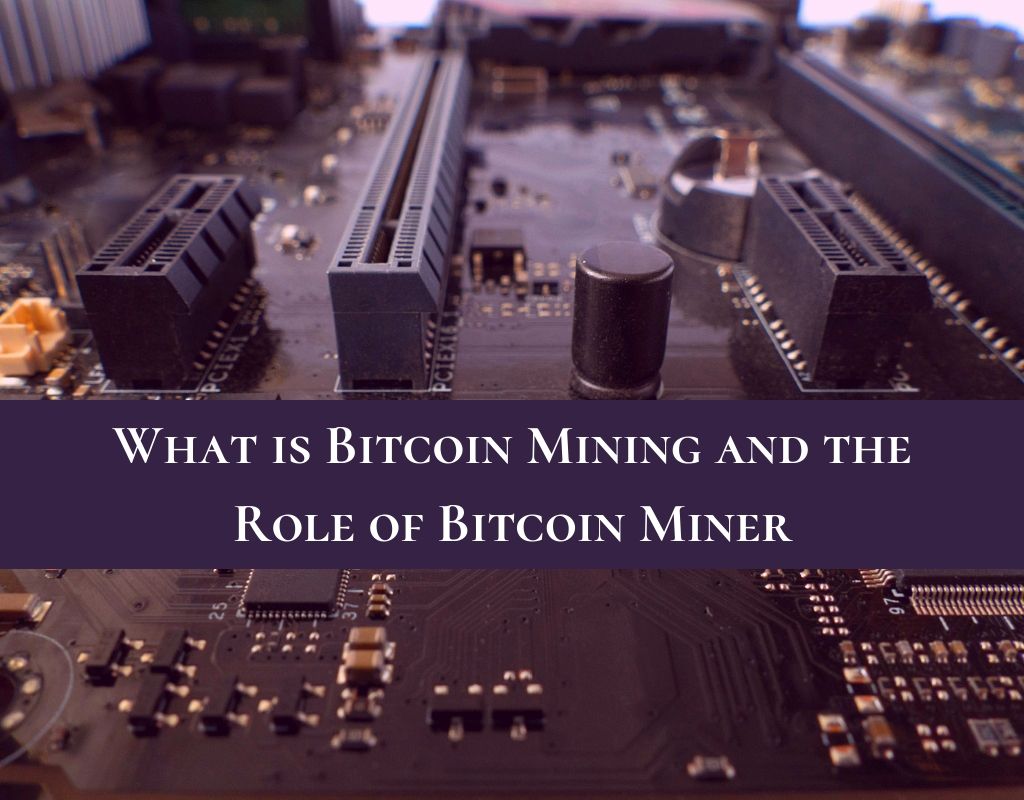What is bitcoin mining and the role of bitcoin miner in the network
In our last post, we discussed what happens when a transaction is initiated in a bitcoin network. We also explained how the BTC is transferred securely via digital signatures in the bitcoin protocol.
Moving a step further, the transaction now needs to get verified i.e. if the payee holds the required BTC in his wallet and if the transferred BTC has not been previously spent (used) before.
In this post, we are going to discuss what is bitcoin mining and the role of miners in verifying transactions and adding them into the bitcoin blockchain
What is Bitcoin Mining
Once a transaction is initiated in the bitcoin network, it automatedly starts a chain involving miners.
For a better understanding, we take up two fictional characters: Aman and Riya. (Please refer to the previous post for better understanding ahead).
Aman inputs all the details of the transaction- the amount of BTC to send to Riya, his private key, as well as Riya’s public bitcoin wallet address. The protocol takes up the output of a previous transaction of Aman in order to verify the funds (BTC) in his wallet.
This data of transaction proceeds into bitcoin’s peer to peer network. It lands into an unconfirmed pool of transactions, also known as memory pool or ‘mempool’. All the unconfirmed transactions reach the nodes (computers/devices), which are part of the bitcoin blockchain.
The nodes start verifying transactions by solving mathematical equations through cryptographic hash function by a mechanism which is known as ‘Proof of Work’ (more on that later). These transactions are successfully verified by the nodes. The authenticated transactions are then bundled into blocks. Further, the blocks are added to the bitcoin blockchain. This whole process of verifying transactions, adding them into blocks and building the blockchain is known as bitcoin mining. The nodes or computers or hardwares who carry out this process are known as Miners.

So, now that we have studied what is mining, let’s understand the role of miners in bitcoin mining
Role of Miners
Miners pick up all the unconfirmed transactions from the mempool and start verifying each transaction using a mechanism known as the ‘Proof of Work’. As soon as the transactions are verified, miners start adding them into blocks. These blocks are then added and linked with the previous block inside bitcoin blockchain. Miners pass the information to other nodes of the bitcoin network. Other nodes update the same information so that the existing public ledger or blockchain remains uniform across the whole network.
Miner Incentives
Miners receive rewards to perform this task of validating transactions and adding them to the blockchain.
These rewards are in the form of blocks consisting of bitcoins. Every ten minutes a block is mined and added to the blockchain. Whenever a block is mined, one miner receives a block of bitcoins (or 12.5 bitcoins as of 2018). The block reward, back in 2009, was 50 bitcoins i.e. one miner receives 50 bitcoins per block. This incentivizes each miner to perform honest verifications. Not to mention, help build the bitcoin blockchain and also invest money and energy into mining activities.
The bitcoin protocol automatically decreases the number of bitcoins that are generated per block by 50%. This process happens every 210,000 blocks or roughly 4 years. In short, this means that while the number of bitcoins generated per block in 2009 was 50, at present (in 2018), the number of bitcoins generated per block is 12.5. Now, in 2020 this number will further be halved and the number of bitcoins generated per block will reduce to 6.25.

The transaction of 2 BTC initiated by Aman now gets transferred to Riya’s account. This transaction is now added to the bitcoin blockchain. It becomes impossible to remove or modify it.
One lucky miner receives a block of bitcoin as a reward for putting that block into the blockchain. Normally, this whole process takes about 10 minutes. However, depending upon the number of transactions, it may even take up to 50-60 minutes to receive confirmation of the legitimacy of the transaction.
Bitcoin Mining Requirements
Mining requires high tech equipment, huge amounts of electricity in order to carry out mining activity. The beauty of the bitcoin network is that each component is intricated with each other in such a way that the whole network remains honest. In order to spend the money required for mining activities, these miners are incentivized by Nakamoto’s bitcoin protocol.
Transaction Fees
In order to process transactions faster, the bitcoin protocol has a feature of ‘Transaction Fee’.
Nakamoto incorporated a transaction fee in the bitcoin protocol, in order to keep the system honest and incentive-based. When the limit of 21 million bitcoins is reached, miners are going to lose interest as there are no bitcoins to receive, as rewards. Thus, there will be no means through which one can verify the authenticity of transactions.
In the present bitcoin system for each transaction, the payee may or may not add a fee to process the transaction. For now, the transaction fee is optional. If the payee decides to add a transaction fee, then that amount would go to the miner. Additionally, miners prioritize transactions based on higher transaction fees. So, if you want the confirmation for your transaction faster, you need to add a transaction fee on the bitcoin network.
After all the bitcoins will get exhausted, the transaction fee will act as an incentive for the miners to process honest transactions and keep building bitcoin blockchain.
Final Thoughts
The whole network of bitcoin is beautifully intricated with each other. Be it the incentives for miners or a common ledger across all the participants. We will keep on exploring more on what happens behind the scenes of the bitcoin network. Keep looking in this segment for more!

